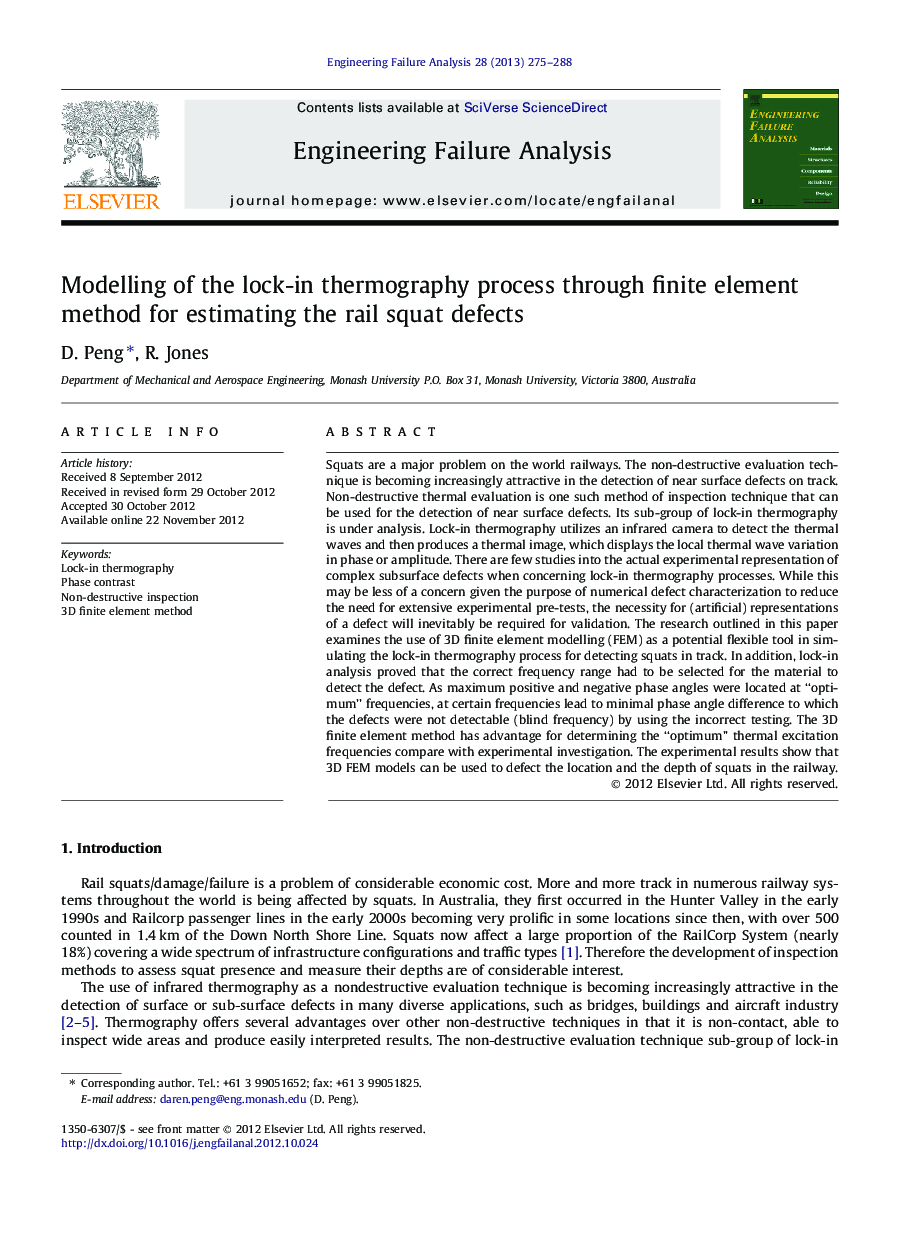| کد مقاله | کد نشریه | سال انتشار | مقاله انگلیسی | نسخه تمام متن |
|---|---|---|---|---|
| 768695 | 1462996 | 2013 | 14 صفحه PDF | دانلود رایگان |

Squats are a major problem on the world railways. The non-destructive evaluation technique is becoming increasingly attractive in the detection of near surface defects on track. Non-destructive thermal evaluation is one such method of inspection technique that can be used for the detection of near surface defects. Its sub-group of lock-in thermography is under analysis. Lock-in thermography utilizes an infrared camera to detect the thermal waves and then produces a thermal image, which displays the local thermal wave variation in phase or amplitude. There are few studies into the actual experimental representation of complex subsurface defects when concerning lock-in thermography processes. While this may be less of a concern given the purpose of numerical defect characterization to reduce the need for extensive experimental pre-tests, the necessity for (artificial) representations of a defect will inevitably be required for validation. The research outlined in this paper examines the use of 3D finite element modelling (FEM) as a potential flexible tool in simulating the lock-in thermography process for detecting squats in track. In addition, lock-in analysis proved that the correct frequency range had to be selected for the material to detect the defect. As maximum positive and negative phase angles were located at “optimum” frequencies, at certain frequencies lead to minimal phase angle difference to which the defects were not detectable (blind frequency) by using the incorrect testing. The 3D finite element method has advantage for determining the “optimum” thermal excitation frequencies compare with experimental investigation. The experimental results show that 3D FEM models can be used to defect the location and the depth of squats in the railway.
► To simulate the lock-in thermography process for detecting squats by 3D finite element modelling.
► To explore the effects that various factors have on phase contrast.
► To reduce the need for extensive experimental pre-tests.
► To defect the location and the depth of squats in the railway validated by experimental results.
Journal: Engineering Failure Analysis - Volume 28, March 2013, Pages 275–288